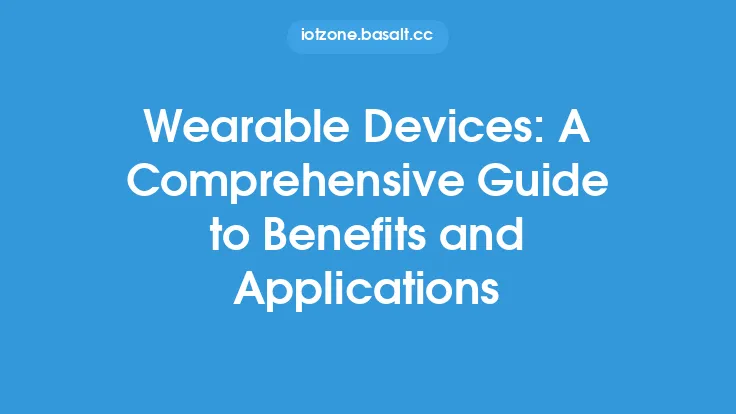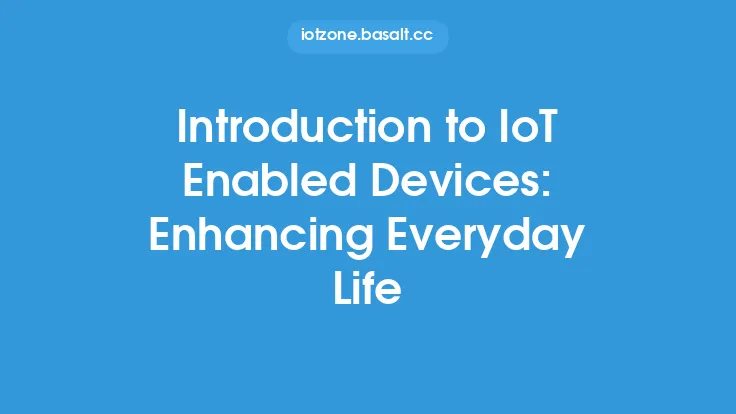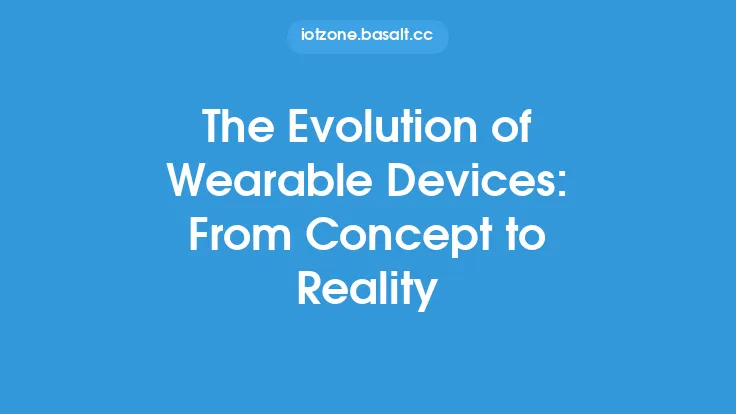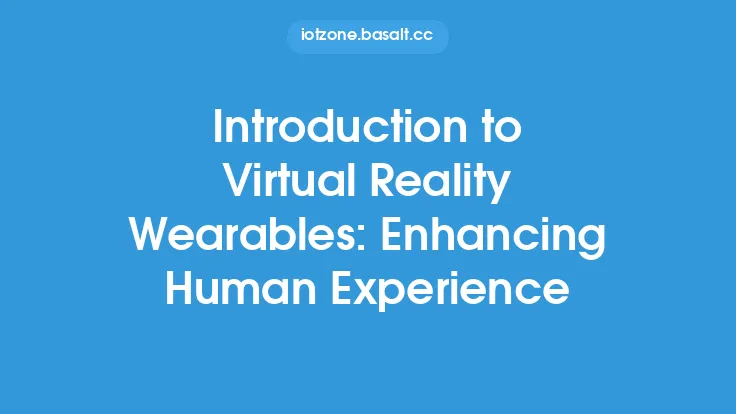The world of wearable devices has experienced tremendous growth over the past decade, transforming the way we live, work, and interact with our surroundings. At the heart of this revolution is the Internet of Things (IoT), a network of physical devices, vehicles, home appliances, and other items embedded with sensors, software, and connectivity, allowing them to collect and exchange data. Wearable devices, a subset of IoT, have become an integral part of our daily lives, enhancing our experiences and providing valuable insights into our health, fitness, and overall well-being.
What are Wearable Devices?
Wearable devices are electronic devices that are designed to be worn on the body, either as an accessory or as a part of clothing. These devices are equipped with sensors, microcontrollers, and communication protocols, enabling them to collect data, process information, and interact with other devices and systems. Wearable devices can be categorized into several types, including smartwatches, fitness trackers, smart glasses, smart jewelry, and clothing with integrated sensors. Each type of wearable device has its unique features, functionalities, and applications, making them suitable for various use cases and industries.
Key Components of Wearable Devices
The architecture of wearable devices typically consists of several key components, including sensors, microcontrollers, memory, power sources, and communication protocols. Sensors are used to collect data from the environment, such as temperature, humidity, acceleration, and heart rate. Microcontrollers process the data collected by sensors and execute instructions, while memory stores data and programs. Power sources, such as batteries or supercapacitors, provide energy to the device, and communication protocols, like Bluetooth or Wi-Fi, enable data exchange with other devices and systems. The choice of components depends on the specific application, form factor, and power requirements of the wearable device.
How Wearable Devices Work
Wearable devices work by collecting data from sensors, processing the data using microcontrollers, and transmitting the information to other devices or systems. The data collected by wearable devices can be used for various purposes, such as tracking fitness and health metrics, receiving notifications, or controlling other devices. For example, a smartwatch can collect data on the user's heart rate, steps taken, and distance traveled, and then transmit this data to a smartphone or cloud server for analysis and visualization. Wearable devices can also receive data from other devices, such as notifications, music, or voice commands, and provide feedback to the user through visual, auditory, or tactile interfaces.
Applications of Wearable Devices
Wearable devices have a wide range of applications across various industries, including healthcare, fitness, entertainment, and education. In healthcare, wearable devices can be used to monitor patients' vital signs, track medication adherence, and detect early warning signs of chronic diseases. In fitness, wearable devices can track physical activity, monitor progress, and provide personalized recommendations for improvement. In entertainment, wearable devices can be used to control music playback, receive notifications, or interact with virtual reality environments. In education, wearable devices can be used to enhance learning experiences, provide real-time feedback, and facilitate collaboration among students.
Benefits of Wearable Devices
The benefits of wearable devices are numerous and well-documented. Wearable devices can improve health outcomes by providing early warnings of potential health risks, enhancing fitness and physical activity, and facilitating preventive care. Wearable devices can also increase productivity by providing real-time feedback, streamlining workflows, and enabling remote monitoring and control. Additionally, wearable devices can enhance user experience by providing personalized recommendations, facilitating social interactions, and enabling new forms of entertainment and education.
Challenges and Limitations
Despite the many benefits of wearable devices, there are also several challenges and limitations that need to be addressed. One of the major challenges is ensuring the accuracy and reliability of data collected by wearable devices, which can be affected by various factors, such as sensor quality, user behavior, and environmental conditions. Another challenge is addressing concerns around data privacy and security, as wearable devices often collect sensitive information that needs to be protected from unauthorized access. Furthermore, wearable devices can be limited by their power consumption, form factor, and user interface, which can affect their usability and adoption.
Future Directions
The future of wearable devices is exciting and rapidly evolving, with new technologies, applications, and innovations emerging every day. One of the key trends is the integration of artificial intelligence and machine learning into wearable devices, enabling them to provide more accurate and personalized insights, as well as predictive analytics and recommendations. Another trend is the development of new form factors and materials, such as flexible displays, stretchable electronics, and biocompatible materials, which can enable new types of wearable devices that are more comfortable, convenient, and user-friendly. Additionally, the increasing adoption of 5G networks and edge computing is expected to enable faster data transmission, lower latency, and more efficient processing of data from wearable devices, opening up new possibilities for real-time analytics, remote monitoring, and IoT applications.





